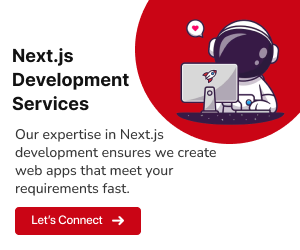In the realm of modern web development, React has established itself as a go-to library for building dynamic and interactive user interfaces. To complement React’s capabilities, developers often turn to frameworks like Next.js and Gatsby, both of which provide powerful tools and functionalities to streamline the development process. When it comes to selecting the right framework, understanding their differences and strengths becomes crucial. In this article, we’ll delve into Next.js and Gatsby to help you make an informed choice for your projects.
Understanding Next.js
Next.js is a versatile React framework that enables developers to build server-rendered applications easily. Developed by Vercel, it offers a robust environment for server-side rendering (SSR), client-side rendering (CSR), and static site generation (SSG). This flexibility allows for excellent performance optimization and SEO-friendly applications.
Key Features of Next.js
Server-Side Rendering (SSR):
Next.js empowers developers to render React components on the server, resulting in faster initial page loads and improved SEO as search engines can index the content effectively.Static Site Generation (SSG):
It allows pre-rendering entire pages at build time, providing unparalleled speed and SEO advantages.Client-Side Routing:
Next.js simplifies client-side navigation, enhancing user experience through its built-in routing capabilities.API Routes:
Developers can create API endpoints within their Next.js applications, enabling serverless functionality and seamless data fetching.
Advantages of Next.js
Versatile Rendering:
Next.js offers Server-Side Rendering (SSR), Client-Side Rendering (CSR), and Static Site Generation (SSG), catering to diverse application needs. SSR boosts SEO, CSR ensures interactivity, and SSG provides rapid subsequent page loads.Simplified Navigation:
Next.js simplifies app navigation with built-in routing, allowing intuitive file-based structuring for easier management of complex navigation. This enhances user experience by ensuring seamless browsing.Serverless Functions and APIs:
Next.js enables creating serverless APIs and endpoints within applications, streamlining backend development without requiring a separate server setup. This facilitates seamless integration of serverless APIs.Improved Performance and SEO:
By rendering content on the server (SSR) and generating static HTML (SSG), Next.js significantly improves performance. This leads to faster load times and aids search engines in efficiently crawling and indexing content, enhancing SEO and user experience.Vibrant Community:
Next.js boasts a thriving community of developers actively contributing extensions, tools, and resources. Its robust documentation and supportive ecosystem make it easier for developers to find solutions and best practices when working with the framework.
Exploring Gatsby
On the other hand, Gatsby is a static site generator built on React. It’s known for its focus on creating blazing-fast websites by employing the concept of pre-rendering and leveraging GraphQL for data querying.
Key Features of Gatsby
Blazing Speed:
Gatsby generates static HTML files during the build process, resulting in lightning-fast load times and optimal performance.GraphQL Integration:
Gatsby utilizes GraphQL to efficiently manage and query data from various sources, providing a unified interface for data retrieval.Plugin Ecosystem:
Gatsby boasts a rich plugin ecosystem that allows easy integration of various functionalities and services, enabling developers to extend their sites’ capabilities.Optimized Performance:
Gatsby optimizes images and other assets, resulting in improved website performance and user experience.
Advantages of Gatsby
Blazing Fast Performance:
Gatsby’s Static Site Generation (SSG) pre-builds pages, ensuring lightning-fast load times. This approach delivers optimal performance, offering users a seamless browsing experience.Optimized for SEO:
Gatsby’s inherently SEO-friendly static sites, with pre-rendered HTML and efficient structuring, enhance search engine indexing. This results in improved visibility and higher rankings on SERPs, aligning well with SEO best practices.Rich Plugin Ecosystem:
Gatsby boasts a robust plugin ecosystem enabling effortless extension of website functionalities. It facilitates easy integration of diverse services, tools, and APIs, empowering developers to create feature-rich websites without extensive custom development.GraphQL for Data Handling:
Utilizing GraphQL for efficient data querying, Gatsby simplifies managing and fetching data from multiple sources. This abstraction layer streamlines data handling, enabling developers to create a unified GraphQL schema and expedite development.Developer-Friendly Environment:
Gatsby prioritizes developer experience with a streamlined development process. Its intuitive setup, user-friendly APIs, and pre-configured tooling enable quick website building. The framework’s simplicity, coupled with hot reloading during development, enhances productivity and reduces development time.
Related: An Exploration of Blitz.js: Unleashing Full-Stack React.js Development
Next.js vs Gatsby
Let’s delve deeper into the comparison between Next.js and Gatsby, highlighting their differences in various aspects:
1. Rendering Methods
Next.js:
It offers Server-Side Rendering (SSR), Client-Side Rendering (CSR), and Static Site Generation (SSG). SSR renders content on the server, CSR renders on the client side, and SSG generates static HTML at build time.Gatsby:
Primarily focuses on Static Site Generation (SSG) where pages are pre-built at compile time, resulting in fast-loading static HTML pages.
2. Data Handling
Next.js:
Provides flexibility in data fetching. It allows both server-side and client-side data fetching. It seamlessly integrates API routes for serverless functions.Gatsby:
Utilizes GraphQL as a query language to fetch data during the build process. It pulls data from various sources and transforms it into a GraphQL schema, enabling efficient data querying.
3. Performance
Next.js:
Offers various rendering methods catering to different performance needs. SSR improves SEO and initial load times. SSG ensures faster subsequent page loads.Gatsby:
Primarily focuses on exceptional performance by generating static files. The pre-rendered content leads to blazingly fast load times and optimal performance, especially for content-heavy sites.
4. Flexibility
Next.js:
Provides more flexibility in terms of rendering methods, allowing developers to choose the most suitable approach based on project requirements. Its built-in routing simplifies navigation.Gatsby:
Offers a streamlined approach primarily for static sites. While it provides great performance, its focus on SSG may limit flexibility in certain dynamic applications.
5. Plugin Ecosystem
Next.js:
Offers a smaller but growing ecosystem of plugins and tools. It’s less plugin-centric compared to Gatsby.Gatsby:
Boasts a robust plugin ecosystem, allowing developers to extend functionality easily. The extensive collection of plugins facilitates integration with various services and tools.
6. Learning Curve
Next.js:
Relatively straightforward for React developers due to its similarity to React. Understanding its various rendering methods might require some learning, especially for SSR and SSG.Gatsby:
May have a steeper learning curve due to its unique approach to SSG, GraphQL for data querying, and its plugin ecosystem.
Choosing the Right Framework
Use Next.js if:
Dynamic Content:
When your project requires frequent updates and dynamic content, Next.js’ SSR and CSR capabilities are beneficial.Built-in Routing:
Next.js simplifies routing, making it an excellent choice for applications with complex navigation structures.Serverless Functions:
If your application heavily relies on serverless functions or API routes, Next.js provides an intuitive way to implement them.
Use Gatsby if:
Static Content:
For content-heavy sites or blogs that don’t require frequent updates, Gatsby’s SSG capabilities shine.Performance Emphasis:
When speed and performance are paramount, Gatsby’s pre-rendering approach ensures exceptional load times.Rich Plugin Ecosystem:
Gatsby’s extensive plugin ecosystem is advantageous for integrating various services seamlessly.
Also Read: Mastering React Unit Testing: A Comprehensive Guide
Conclusion
In the realm of React frameworks, both Next.js and Gatsby offer robust solutions for web development, each catering to different project requirements. Next.js excels in dynamic applications needing server-side rendering and flexible routing, while Gatsby shines in creating blazing-fast static sites with a focus on performance and a rich plugin ecosystem.
Ultimately, the choice between Next.js and Gatsby depends on the specific needs of your project. Understanding their strengths and capabilities will help you make an informed decision, leading to the successful development of your web applications or sites.


























